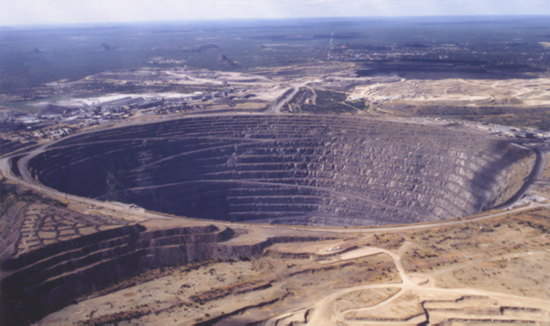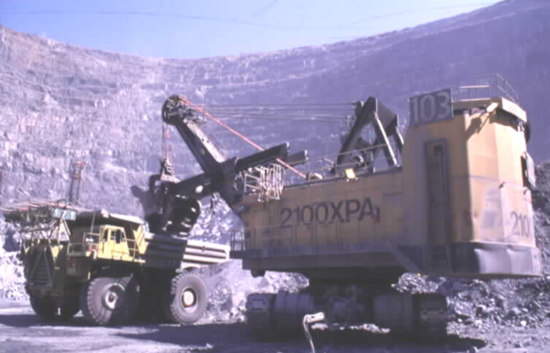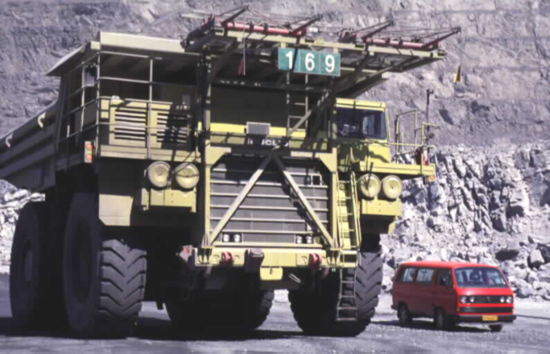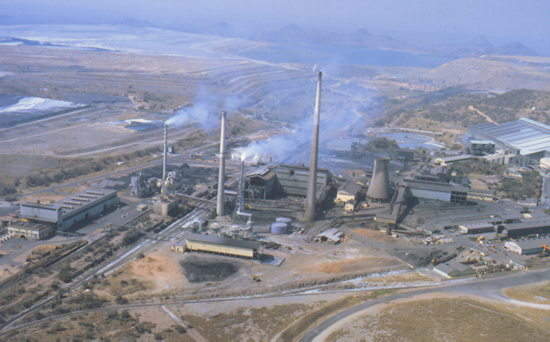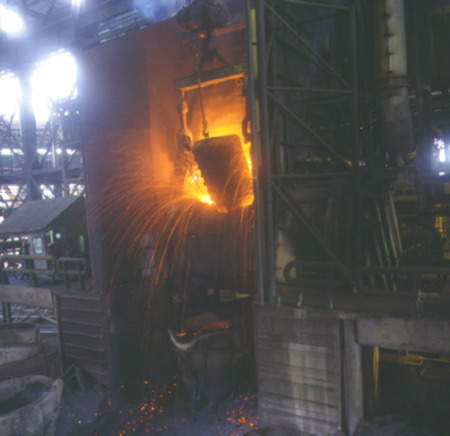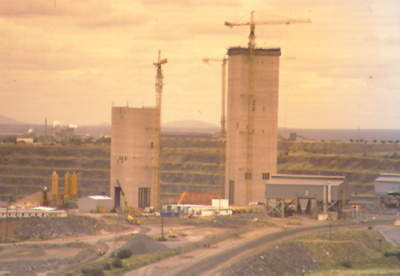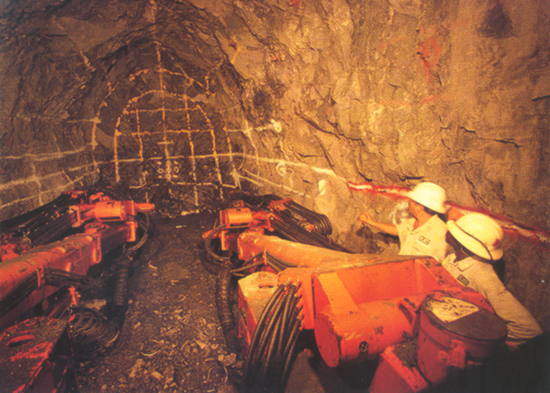The Palabora copper mine is South Africa’s leading copper producer. It is located 360km north-east of Pretoria, close to the Kruger National Park.
The project was previously developed by Palabora Mining Company (PMC), which was owned by Rio Tinto (57.7%) and Anglo American (16.8%). The partners reached a binding sales agreement with PMC and Empowerment Partners to sell their respective shares in Palabora in December 2012.
In July 2013, the company was renamed as Palabora Copper with its new owners being PMC (74%) and Empowerment Partners (26%).
Background at Palabora mine
Open-pit mining commenced at Palabora in 1964 and ended in 2002 when the pit reached its final economic depth. The development of an underground mine to work the ore remaining below the pit bottom began during the final years of open-pit production, at a cost of $465m, with the prospect of a further 20 years’ life in the underground operation.
The integrated copper-production complex has a metal-refining capacity of 135,000tpa, although the change to underground mining means that some of this capacity is now redundant. The operation employs 2,200 people.
The underground mine construction was concluded in October 2004 following the commencement of the 20th cross-cut.
The mine continuously produced 30,000 tonnes per day (tpd) by May 2005, marking as one of the world’s fastest ramp-ups to full production.
Geology and reserves
Palabora contains magnetite, vermiculite, apatite, zirconium, titanium and uranium, as well as copper. The deposit is hosted in an alkaline igneous complex comprising mainly pyroxenite with occurrences of pegmatites, foskorite and carbonatite.
Three separate mineralised zones have been identified within the complex’s 20km² surface outcrop, of which the most northerly is phosphate-rich while the central (Loolekop) zone forms the basis for Palabora’s copper production.
The copper orebody is hosted in a carbonatite pipe within which grades are typically concentric with the highest values (1.0% copper) at the core. The higher-grade mineralisation extends well beneath the centre of the projected final open-pit floor.
The underground mine has been developed on a proven reserve of 225Mt at 0.7% copper, in addition to an additional probable reserve of 16Mt grading 0.49% copper. By the end of 2005, proven and probable reserves totalled 112Mt grading 0.56% copper, representing a significant reduction from the tonnage and grade cited the year before. Rio Tinto recorded a $161m asset write-down in its 2005 accounts to reflect this.
As of December 2013, the total proven ore reserves were 11.9Mt ore grading 0.52% copper.
Production at Palabora
During 2006, Palabora treated 10.7Mt of ore grading 0.71% copper, giving an output of 61,500t of copper in concentrates.
While early production of the underground operation had been affected by problems with fragmentation in the block cave and secondary breaking systems, these seem to have been overcome in the past two-to-three years. The Palabora smelter produced 81,200t of copper metal, compared with 80,300t in 2005.
The mine’s output of magnetite and nickel sulphate was 1.13Mt and 120t respectively, with 198,000t of vermiculite. Since it began operations, Palabora has created a stockpile of some 240Mt of magnetite, grading 56% iron and 2.3% titanium dioxide, for which it began soliciting offers for sale in early 2005.
The mine produced 6.5Mt of magnetite and 128,000t of vermiculite in 2013.
Open-pit mining at the Palabora mine
Throughout its 35-year life, Palabora was often at the forefront of surface mining technology developments. A key feature was its use of a trolley-assist system for haul trucks coming out of the pit, to save diesel, and it was one of the early users of both in-pit crushing and computerised truck dispatching.
The open-pit fleet consisted of around 20 Euclid and Unit Rig trucks, with four P&H 2100XPA and 2,800 shovels. Truck payloads were monitored using a Pit Control on-board weighing system on the shovels, linked to the Modular Mining Systems’ despatching and monitoring programme.
The Fuller-Traylor gyratory in-pit crusher, with a nominal capacity of 5,000tph, fed the 1.8m-wide main conveyor that carried crushed ore up a drift in the pit wall to the coarse ore stockpiles on the surface.
Underground development at Palabora
The underground mine is a block caving operation, the first such system to be used in metal mining in South Africa. With the introduction of the underground operation, the output of ore has fallen from the 82,000tpd achieved in the previous open pit to 30,000tpd.
However, the transition to underground production has proved to be problematic, especially in relation to the handling of oversized ore in the draw points, and the mine has struggled to meet its production targets. The average output during late 2003 was around 20,000tpd, and additional secondary breaking systems are being installed to help reduce the draw-point bottleneck.
Shaft Sinkers was contracted to install the main service shaft and a 1,280m-deep production shaft, while RUC Mining Contracting has been carrying out the underground development. This included driving around 36km of tunnels plus the underground crusher stations, ore handling infrastructure and the undercut level for the first block cave, situated 500m below the final pit bottom. The crushing stations are being fitted with four ThyssenKrupp 900t/h double-toggle jaw crushers that feed a 1.32km conveyor linking to the production shaft.
The underground mobile fleet consists of a wide range of manufacturing and support vehicles of more than 90.
The production fleet consists of a mixed fleet of 19 8.5m³ load haul dumpers (LHDs), which load and deliver the ore from the draw points to the crushers. These loaders are capable of delivering approximately 2500t of ore per day each.
The fleet also consists of ten Medium Reach Rigs for drilling holes and inserting explosives into large rocks that get trapped within draw-points. The mine also employs seven Robust Rigs, four water cannons Agi-Cars, scissor lifts, logistics vehicles, and trailers.
Ore treatment and sales at Palabora
Palabora employs one of the most complex recovery circuits installed at any copper mine, producing eight metal, mineral and chemical products in 20 different varieties and grades.
The complex includes a concentrator, copper smelter and refinery, currently capable of producing 135,000tpa of copper plus byproducts. Phosphate-rich tailings are delivered to Foskor while Palabora sells its own copper, precious metals, nickel, zirconium, magnetite and vermiculite on domestic and world markets.

